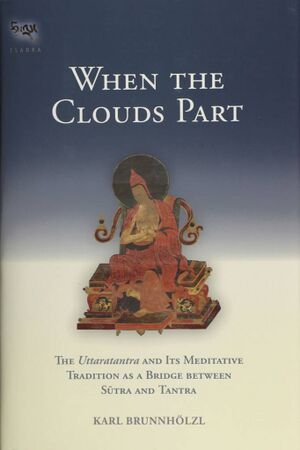Gyü Lama: Difference between revisions
No edit summary |
No edit summary |
||
| Line 20: | Line 20: | ||
'''Learn More...''' | '''Learn More...''' | ||
::[[Ratnagotravibhāga Mahāyānottaratantraśāstra]] - READ THE TEXT HERE | |||
::The [[Gyü Lama]] (རྒྱུད་བླ་མ་), also called the [[Mahāyānottaratantra Śāstra]] (ཐེག་ཆེན་རྒྱུད་བླ་མའི་བསྟན་བཅོས་), the [[Ratnagotravibhāga]] (RGV), or simply the [[Uttaratantra]], is one of the most important texts of the Yogācāra tradition that expounds the buddha nature theory (tathāgatagarbha), the idea that all sentient beings possess the nature of a buddha. The Tibetan Buddhist tradition holds the Ratnagotravibhāga to be one of the Five Treatises that [[Maitreya]] taught to [[Asaṅga]] in the 4th century. [http://buddhanature.tsadra.org/index.php/Main_Page Read More...] | ::The [[Gyü Lama]] (རྒྱུད་བླ་མ་), also called the [[Mahāyānottaratantra Śāstra]] (ཐེག་ཆེན་རྒྱུད་བླ་མའི་བསྟན་བཅོས་), the [[Ratnagotravibhāga]] (RGV), or simply the [[Uttaratantra]], is one of the most important texts of the Yogācāra tradition that expounds the buddha nature theory (tathāgatagarbha), the idea that all sentient beings possess the nature of a buddha. The Tibetan Buddhist tradition holds the Ratnagotravibhāga to be one of the Five Treatises that [[Maitreya]] taught to [[Asaṅga]] in the 4th century. [http://buddhanature.tsadra.org/index.php/Main_Page Read More...] | ||
Revision as of 15:37, 28 March 2018
Shedding light on the meditative tradition of the five texts of Maitreya with meditation manuals and commentaries from the Kagyu and Kadampa traditions.
The Uttaratantra and Its Meditative Tradition as a Bridge between Sutra and Tantra

